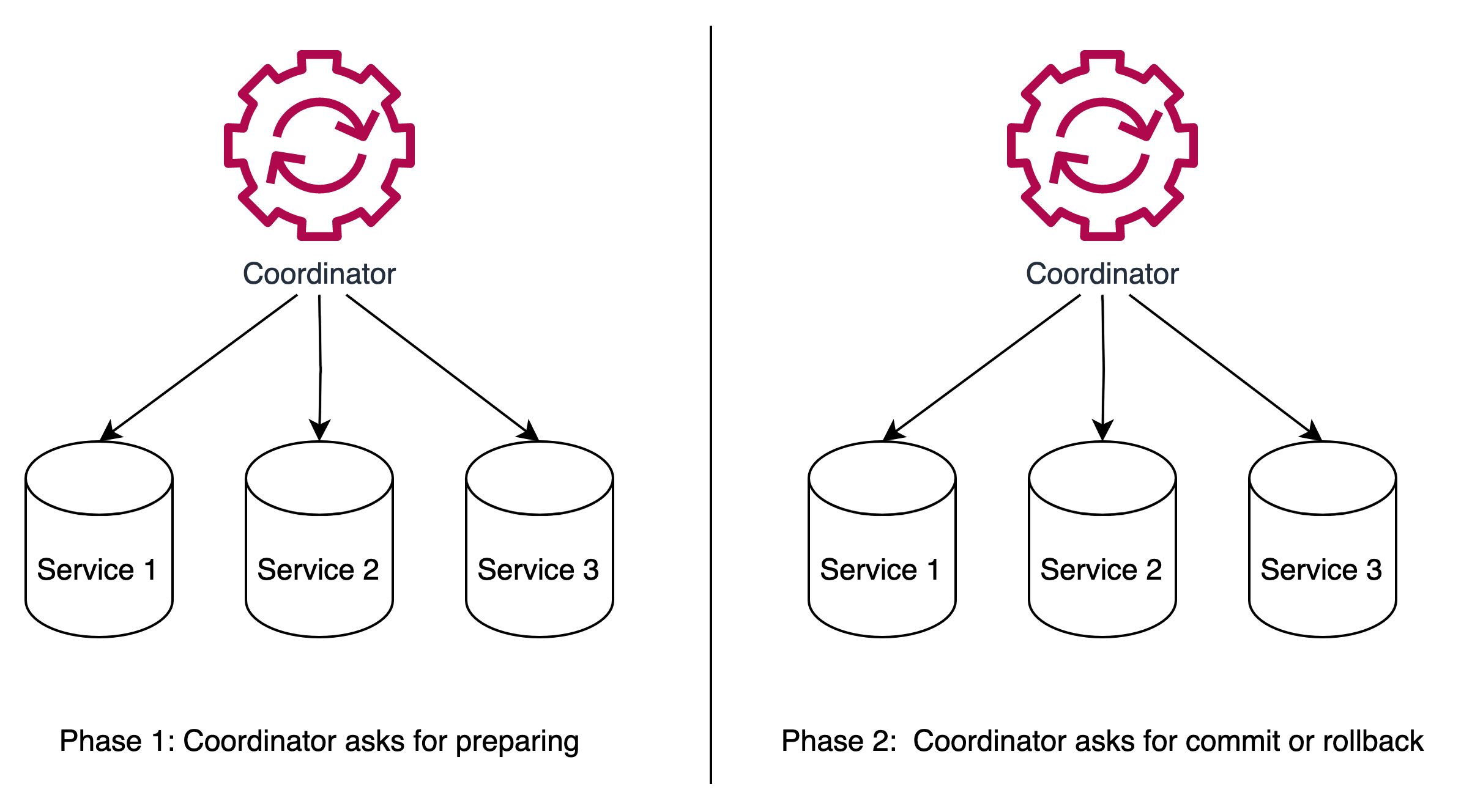Ensuring Atomicity in Distributed Systems: Managing Transactions Across Microservices

In a relational database, a transaction is a series of operations that must be executed in a way that guarantees ACID properties: Atomicity, Consistency, Isolation, and Durability.
Atomicity, the 'A' in ACID, ensures that all operations within a transaction are completed; otherwise, none of them are. This guarantees that the system's state remains consistent even in the face of failures.
In monolithic systems, achieving atomicity is straightforward since all operations happen within a single database. However, in microservices and distributed environments, achieving atomicity becomes challenging as transactions span multiple services and databases.
Distributed Transactions
In a distributed system, a single transaction often involves multiple microservices, each with its own database. Ensuring atomicity in such an environment requires coordination across these services.
Distributed transactions are managed using two primary protocols:
Two-Phase Commit (2PC): A coordination protocol that ensures all participants in a transaction agree to commit or roll back the transaction.
Saga Pattern: A sequence of local transactions where each service updates its data and publishes an event or invokes another service.
Two-Phase Commit (2PC)
This protocol involves a coordinator that manages the transaction's commit process in two phases: prepare and commit. In the prepare phase, the coordinator asks all participants if they can commit. If all participants agree, the commit phase begins, and the coordinator instructs them to commit the transaction. If any participant cannot commit, the coordinator instructs all participants to roll back.

Pros:
- Guarantees atomicity and consistency.
Cons:
- Can be slow due to the need for coordination.
- Prone to blocking if participants fail to respond.
Saga Pattern
Instead of a single global transaction, the saga pattern breaks the transaction into multiple smaller transactions, each handled by a different service. If any step fails, compensating transactions are executed to undo the changes made by previous steps.

Pros:
- More scalable and resilient to failures.
- Non-blocking.
Cons:
- More complex to implement due to the need for compensating transactions.
- Potential for temporary inconsistencies.
Challenges and Solutions
Network Partitions: Network failures can cause communication issues between services, leading to incomplete transactions. Solutions include implementing retry mechanisms and using distributed consensus algorithms like Paxos or Raft.
Data Consistency: Maintaining data consistency across services is challenging. Eventual consistency models and using conflict resolution strategies can help mitigate this issue.
Performance Overheads: Distributed transactions can introduce significant performance overheads. Using asynchronous processing and optimizing transaction boundaries can help improve performance.